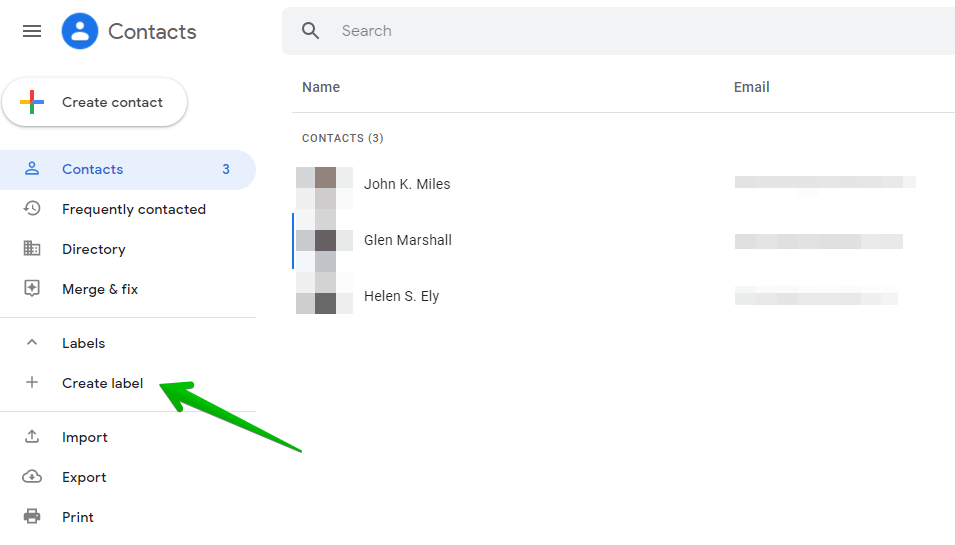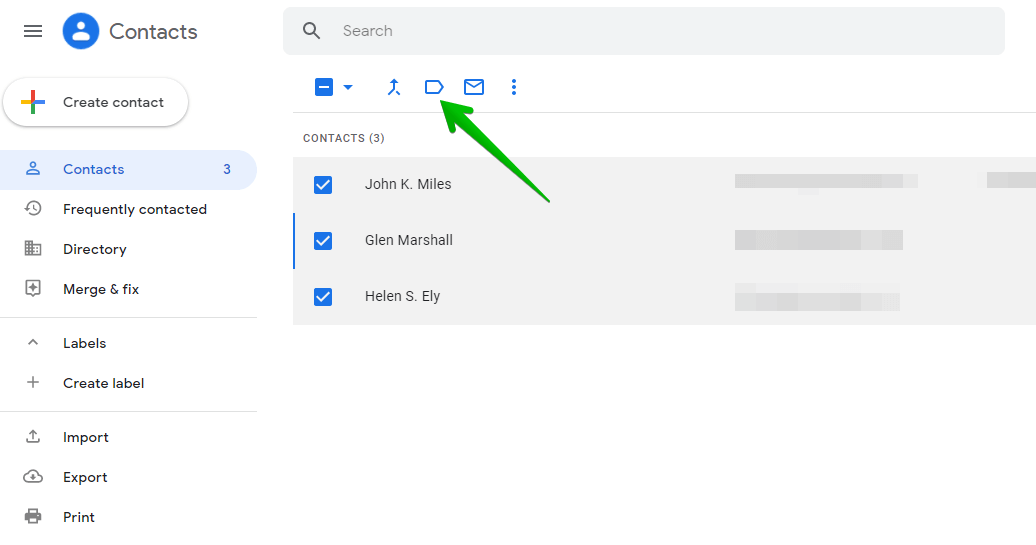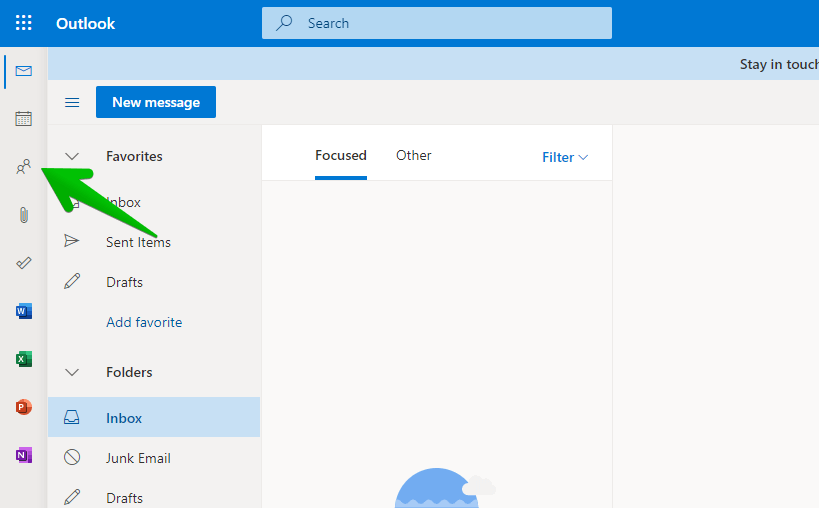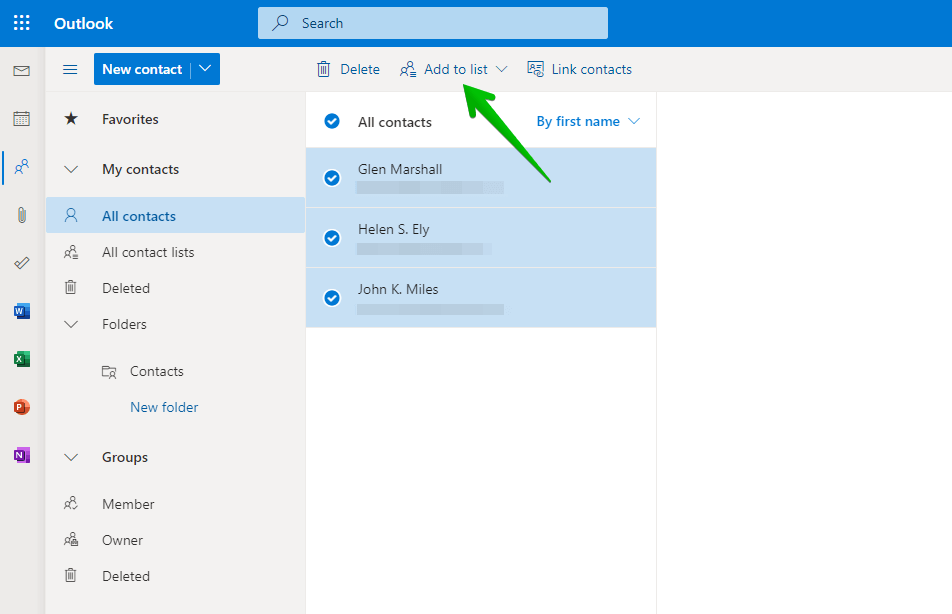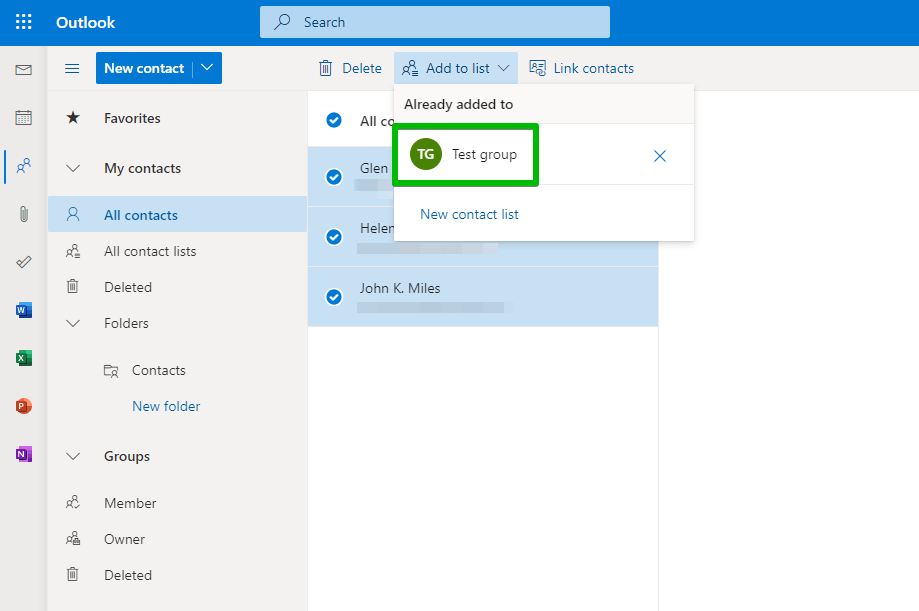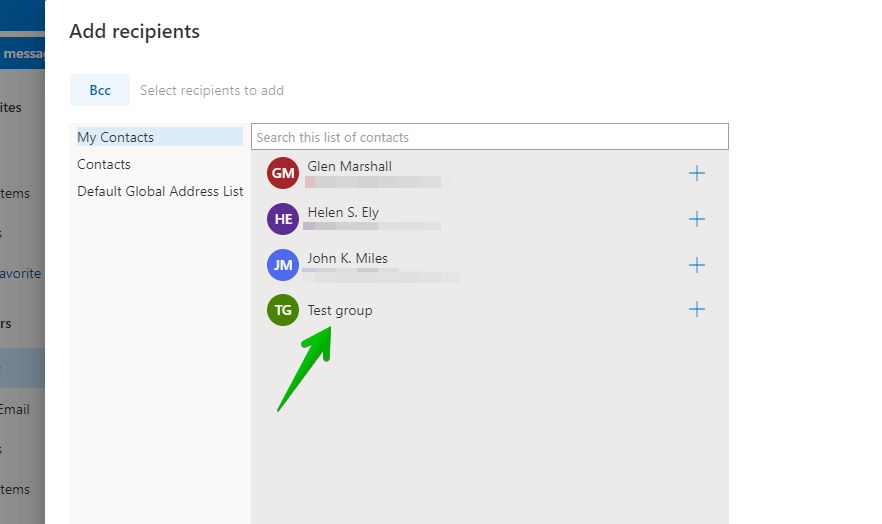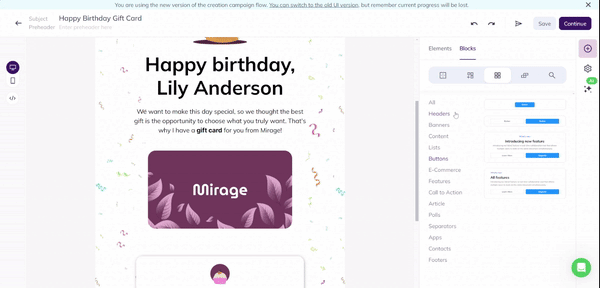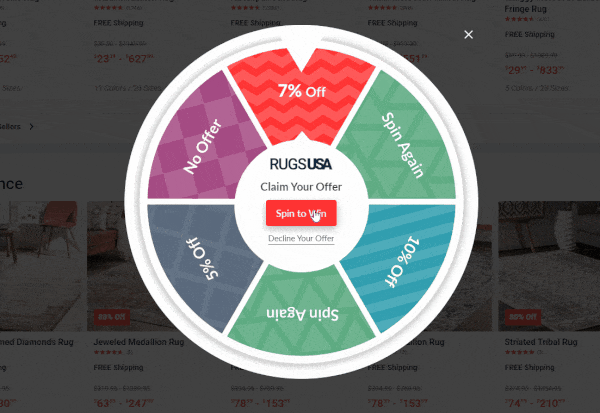How to send a lot of emails at once without getting blacklisted and wasting your efforts? We are going to tell you about email blasts and all that goes with them: show how to send mass emails and what options you have, guide you through, and describe the best (and worst) practices of bulk emails. Let’s dive in.
Email Blast: What It Is and When Sending Mass Email Is a Good Option
True to its name, an email blast is when you send one message to many people in one go. It’s also referred to as mass or bulk emails and it’s one of the main email marketing tools.
Mass email is a good option for announcing:
- New items
- Promotions
- Special offers
- Discounts
The most common example of mass emails that you can find in your mailbox is newsletters.
An example of a mass email from Rover. You won’t find any indications of previous interactions with the brand here. Source: Really Good Emails
Unlike triggered or transactional emails that are sent because of some earlier user action, email blasts are stand-alone units, created and designed as separate email campaigns.
It’s important to distinguish between valid mass emails and spam. Historically, these two types of emails are interconnected as many of the first mass email campaigns were not solicited at all back in the days of email marketing Wild West.
This shade somewhat remains to date making marketers and entrepreneurs unsure about bulk emails. But thanks to the introduction of laws like the CAN-SPAM Act, companies and individuals that abuse anti-spam rules risk having such consequences as domain sanctions, fines, bans, downtimes, and other legal actions.
Plus, there are ways to fix this ambiguity and create messages, valuable to your audience.
There are two main ways to send mass emails legitimately:
- Using common software made by Google or Microsoft.
- Using specialized software made by email marketing platforms.
Let’s look at them in detail.
How To Send Bulk Email Straight From Your Mailbox
It is possible to send mass emails using good old Gmail and Outlook. Yet, this option works only if certain conditions are met:
- You need to send no more than several hundred emails per day (more details on the limits a bit later).
- You’re sending to your friends or colleagues (clients won’t do, Gmail and other email service providers do not allow you to send promotional messages).
Gmail: Step-By-Step Guide
Limits
In Gmail, you can send up to 500 messages per day. It doesn’t matter whether you send one message to 500 recipients or 500 messages to 500 recipients, email addresses count each time a message is sent. After that, if you try to send some more, you’ll get an error message and will have to wait from 1 to 24 hours to continue.
With Google Workplace, you have more freedom with the number of messages per day limited to 2000.
To send an email in Gmail to several tens or hundreds of people, you need to:
1. Register or sign in to your Google account. Press the menu icon and go to the Contacts page.
2. Choose Create label in the sidebar menu. Create and save the name of your new group.
3. Go back to Contacts and check those of them that you want to put in the group. If you don’t have any contacts yet, you can import them from a CSV or vCard file, create them from scratch, or add contacts from your company’s shared list if you have one.
After checking the contacts, click on the Manage labels icon, choose the label, and press Apply.
4. Congratulations, you’ve got yourself a list there! All that’s left is to go back to the inbox and create a new message. Press on Bcc, then on My contacts and you’ll see the name of your group there. Choose it and all’s set. Write the text of the message, add a signature, and hit send.
Why choose Bcc instead of To or Cc?
Bcc in emails stands for “Blind carbon copy” and means that if you choose this option, the recipients will not see each other’s addresses which is probably what you would want in mass emails. You can also choose the Cc or To options. They are similar and mean that the recipients will be able to know who else you sent your message to.
Instruction For Outlook Users
Limits
Outlook allows you to send up to 5000 emails per day. At the same time, you cannot send more than 500 messages at a time, and the total number of new recipients (those to whom you haven’t sent messages yet) should not exceed 2000 people.
What’s more, due to anti-spam regulations, a new Outlook.com account has a low sending quota with a temporary restriction that passes after a period of a few days to a month.
Here’s how you can send an email to a group of recipients using the outlook.live.com website.
1. Sign in or register a new Microsoft account.
2. Go to People.
3. Same as with Gmail, you can import contacts or create new ones. Once you’re done, check the right contacts and then click on Add to list.
4. Type in the name of the new list and press Enter. Cheers, you’ve got a list to work with!
5. Now go to the inbox, press the New message button, pick your new list in the Bcc field (or the Cc, or the To field).
6. Type in your message and send it to all the people on the list, done.
Pro tip
There’s a Mail merge feature that expands on Outlook’s (and Gmail’s) basic abilities to send mass emails. It connects with Microsoft Word and Excel and gives you more freedom managing your lists and personalizing and customizing emails to some extent.
OK, but what if you need to send more emails than Gmail and Outlook would let you to or you need to connect with your clients rather than friends and colleagues? Remember that you cannot do it with Gmail or Outlook, they won’t allow it.
Plus, as you can see, both Gmail and Outlook clearly weren’t created for mass emails. There are far more superior tools for bulk emails made by email marketing platforms that’ll let you design beautiful emails and track results.
Why Use Special Software For Email Blasting
So yes, technically, you can send mass emails using Gmail or Outlook. But seasoned marketers use special software because email service providers have limitations on the number of contacts, mailing speed, and other factors. Moreover, there’s a strong possibility that using common tools, not designed for mass emails, will mark your messages as spam or not get into your recipients’ mailboxes at all. Add to that the absence of any design templates and ways to know how many of your messages were opened and how many people clicked on links.
In other words, while it’s possible to send mass emails in services like Gmail and Outlook, it’s likely to result in something:
- Unprofessional.
- Messy and time-consuming.
- Insufficient.
- Suspicious. Email service providers don’t like email blasts coming from free domains because if you’re not even using corporate email, they think that there’s a high probability that your list is not legit.
With special software provided by the email marketing platforms like Selzy, you can greatly minimize chances of failure. You can:
- Use a free plan that every such service has to try out its advantages at no cost. There are limitations but even so, this option is far more convenient than Gmail or Outlook.
- Send as many emails to as many people as you want. Everything depends on your pricing plan.
- Send to clients, not just to friends and coworkers.
- Design attractive and compelling messages.
But wait, there’s more:
You Can Avoid Spam Filters
With specialized email marketing software, you can be sure your emails will be delivered to your customers’ mailboxes. To achieve this result, they:
- Comply with GDPR and Consumer Protection Laws.
- Build a reputation with internet service providers.
- Verify the authenticity of the sender by using email authentication: SPF, DKIM, DMARC, and FBL.
- Have moderators who check each campaign and cut out intentional spam and help newbies avoid common mistakes.
For example, 99.89% of emails delivered by Selzy get in subscribers’ inboxes.
You Can Track The Results
It’s very hard to analyze how your emails perform with Gmail and Outlook. Without using (or creating) extra tools, you won’t even know whether an email from you was received and opened, let alone the more sophisticated metrics like subscriber’s devices, locations, and preferences.
Using the analytics made by email marketing platforms, you can see how effective your campaign is and make adjustments, planning for the future. Many parameters matter:
- Opens
- Clicks
- Conversions
- Domain reputation
- Unsubscribes
- Spam complaints.
You Can Send Out Automated Emails
Sending mass emails is just the start of your email marketing efforts.
You can escape most of the manual work of responding to customers’ actions with automation tools almost every email service provider has. All you need is to set up a process once from the start, and the rest will happen on its own.
Here are some examples of automated emails:
- Triggered series of emails, when each next one of them is sent in response to some condition.
- Transactional emails, like payment or delivery notifications.
- Email workflows. You can nurture a client from the moment they first visit your website to the purchase.
It’s called “drip marketing”. It allows you to gently nurture your customers without appearing intrusive.
You Can Make Your Emails Personalized
The fact that you want to send mass emails doesn’t mean you cannot make them personal. Personalization improves your email campaign performance because you tailor each email to your subscriber’s behavior and make them feel special, even if just a tiny bit.
Some examples of how you can make your emails more personal:
- Add a recipient’s name.
- Send birthday greetings.
- Offer personal discounts based on user interests.
- Schedule emails for times that are convenient for subscribers.
UNIQLO is telling the good news. Source: Really Good Emails
All these are very hard to do manually in Gmail or Outlook without getting frustrated by the effort. There are additional tools that can help you with some of the aspects, but their capabilities are limited.
For personalization, email marketing software uses merge tags — sections of text where user data gets added automatically based on the information in the contact list. For example, the simple name substitution means that in the email editor, you’ll see something like “Hello {{Name}}!” And the client will see “Hello James!”.
Besides basic substitutions, there is dynamic content, which is a step up. It means that not only individual elements will differ from message to message, but the whole blocks of content. As another fashion brand example, this email from Forever 21 has dynamic content both in the hero section and the grid and is unique to its recipient because it tells about their items of choice:
Source: Really Good Emails
You Can Design Emails and Signup Forms
However great the content of your message is, to reach the hearts and minds, it needs a great wrapper — design. Content is king, but it also matters how it’s structured and presented.
So, you need a layout of your email. You can make one yourself, order from an agency or a freelancer, or use an online HTML editor. What you have to remember though is that the layout of emails is different from the layout of web pages. HTML editors made by email marketing platforms take these nuances into account, check how a message is displayed in different email clients and on different devices.
Email service providers have drag-and-drop email builders that allow creating unique templates both for desktop and mobile devices without knowing how to code.
Email marketing platforms also have tools for creating professional-looking subscription forms for your website, both embedded and pop-up ones. Look at this beautiful example of a spin-to-win pop-up form Rugs USA used on their website that you cannot help but spin:
Source: Wisepops
You Can Get Support
Support teams of email service providers can resolve any issue that might come your way. They will help you if:
- Your emails got flagged as spam.
- Your campaign was rejected.
- You have legal issues.
- You have questions about email design.
- You need to integrate third-party services.
- You need help with email authentication.
Different email marketing platforms have different options on when and how you can contact their technical support. That’s one of the things that you should find out before buying a subscription. Selzy tech support is ready to assist you 24/7.
How To Send Mass Emails Using Special Software Like Selzy
Let’s see what you need to do, taking Selzy as an example:
- Create an account. To start with your first campaign, upload the email list.
- Choose a ready-made template or create your own design from scratch.
- Select the subscribers and send the email.
- Track your results to perform even better.
Learn more about starting your first email campaign in this detailed tutorial.
For a start, you can try out several email marketing platforms, assess their interface, capabilities, and perform tests.
The Dos And Don’ts Of Sending Bulk Email
With great numbers comes great responsibility. The possibility of making a mistake is multiplied many times when you’re dealing with bulk emails. So whichever mass email option you choose, there are some recommendations that are best to consider if you want your campaign to fly high.
Avoid Looking Like Spam
Abide by the CAN-SPAM Act to avoid the consequences and follow the rules:
- Use a list gathered by you or your colleagues personally.
- Get an agreement to receive emails from the people on the list (use double opt-in to make sure their consent is valid).
- Always make the terms of the newsletter open. Tell people what, when and how many emails they will receive from you.
- Clean up the list regularly and add new recipients.
- Provide clear and easy opportunities to unsubscribe.
- Keep an eye on the quality of design so that your emails look respected and reliable.
- Avoid using words and phrases associated with spammers like “free gift” or “you are a winner”.
Send Email To A Specific Group
You would think that mass emails imply sending the same message to as many people as you can, i.e. the full list. Still, as we mentioned earlier, email marketing platforms allow you to add personalization to your mass email and it would be a crime not to use it. And personalization is impossible without segmentation first.
You can divide your email list into segments based on RFM analysis and by taking into account the user’s:
- Activity
- Preferences
- Age and gender
- Geography
In one of their latest reports, Litmus outlines the following as the main factors that marketers used to personalize the content of their emails in 2019 and 2020:
Calling somebody by their name is a simple and popular technique, followed by the distinction between the stages of the customer journey
Source: Litmus
As a result, every person from your list will receive a message that suits and interests them best, and they will pay you for that with their engagement.
Track Data And Results
You have to know how effective your campaigns are to know what works and what doesn’t. Get to that win-win situation when your business thrives because your audience is happy.
Use analytics tools described earlier (and other ones too) to generate more sales. In fact, a staggering 45% of marketers say that their ROI measurement is poor or nonexistent, so you have a good chance of having a leg up on the competition.
Those who do measure it, use these metrics:
Open rate, click rate, and unsubscribe rate seem to be the most popular
Source: Litmus
The most common tool used to see which email element performs better is A/B testing. Let’s imagine you have a couple of ideas on email subject lines. Test them both! Create two messages, identical except for their subject lines, and let 10% of your list receive option #1 and the other 10% — option #2. Whichever shows better results will find its way into the inboxes of the rest 80% automatically.
By going further and connecting your account with Google Analytics, you’ll get an even better perspective, knowing exactly how much profit you made by your latest campaign and what its ROI is.
Keep Them Private
Your email address list is your property and responsibility, which must be kept confidential and not be given to third parties for commercial or any other purposes.
So when sending an email, make sure that the recipients don’t see the rest of the addresses if you use Gmail or Outlook. People don’t want others to know their email addresses for fear of becoming spam victims and disclosing their personal information in general.
Another point is that it’s not beneficial to show people that they are the recipients of the same promotion. Although individuals usually don’t mind this idea, sending the same email to competing companies can make you lose all your prospective partners.
Now let’s see what things are best to be avoided:
Don’t Send Emails From New Domains And New IPs
When deciding on the technical details of your future email campaign, bear a few things in mind. It’s best not to choose domains and IPs that are new to the internet because every domain and IP has a reputation and email services are suspicious towards clean slates. It’s much better to choose older and tested addressees that’ve been a while in the business for your first mass email campaign.
It’s OK if you start with a new domain and a small base of a few hundred people. However, larger campaigns will alert email service providers. To prevent email campaigns from being blocked, increase the number of emails gradually. If you’re a client of an email marketing platform, you’ll get recommendations on this point too.
Don’t Use Purchased or Old Email Lists
If you don’t have fresh contacts, it might be tempting to buy a list or use one you pulled together a while ago but there are pitfalls.
Using purchased lists is bad for business because:
- Almost all the emails will be blocked by email services’ spam filters and find themselves in the spam folder. Those 2-5% that’ll get through won’t be welcomed by recipients because they are unsolicited and won’t bring you any good conversions.
- There are fines since using purchased lists is illegal. For each spam email, a sender is subject to penalties up to $44K.
- It affects the reputation. Email services will know that “this sender” has a history of rule violations, so they will make life hard for them when launching the next campaigns.
As for the old lists, people get irritated by receiving promo emails from companies they haven’t seen for some time even if they previously gave their permission. Let a couple of weeks pass by and they would be taken aback/unpleasantly surprised by your messages.
Besides, chances are, an old list would contain a lot of invalid addresses and spam traps. Plus, if you try to use lists dating back a few years, it’s not even likely that you’ll succeed. For example, it’s likely you’re going to violate GDPR that came into power in 2018.
TL;DR: Key Takeaways
Let’s summarize.
Bulk emails and spam are two different things. In fact, what they have in common is a relatively large list of contacts. Everything else is different.
There are two main ways you can send mass emails:
- Using common tools like Gmail or Outlook but the results might not be what you hope for.
- Using software specially designed for the purpose like Selzy’s — a recommended option.
With special software, your messages will be:
- Much better resistant to spam filters
- Trackable
- Automated
- Personalized
- Beautiful.
You can make them even better if you follow a few rules:
- Do everything you can to avoid looking like spam.
- Make your campaigns sufficiently personalized.
- Track the results and make changes.
- Keep the information private.
- Avoid using old and purchased lists and be careful with fresh domains and IPs.
Hope this article has shed some light on the question of sending bulk emails and good luck with your future campaigns!








